Our last stop before leaving the Black Hills area was Devils Tower National Monument. Unfortunately for people who care about grammar, the lack of an apostrophe in the name is “correct” since that is how the location was named in the statute designating the monument. While this is not a huge site, with just a few miles of hiking trails centered around the tower itself, it was great to spend a few days at the campground inside the park. This allowed us to see different personalities of the tower emerge in different light and at different times of the day (and night!) and, more important, it allowed us to take our hikes and view the tower outside the peak visitation period of 10 a.m. – 3 p.m. Since the tower is so iconic, this place is absolutely jammed with selfie-takers and bus tour groups who stop in for extremely brief visits on their way to other places. As part of our growing commitment to slow travel, we stayed two full days and didn’t rush through anything.
The tower is a unique geological phenomenon, and it’s easy to see why there are so many interesting Native American origin stories for the formation. Interestingly, even modern geologists are not completely certain of how this mass of igneous rock emerged into the upper levels of Earth’s crust. It’s clear there was some sort of volcanic activity, but the exact nature of the process is uncertain. The hexagonal columns that make up the tower are less of a mystery; they are a fairly natural result of the cooling of molten rock which introduced regular cracks as the rock shrunk to its final shape. Regardless of how it all came to be, the tower is an arresting sight as it rises from the surrounding plains.
We also loved seeing the scenery of northeastern Wyoming. The red oxidized sandstone of the Spearfish layer of sediment is something we have been seeing all over the Black Hills, lending even more color to the landscape, and it is prominent here at Devils Tower. The lovely Belle Fourche River flows along the base of Devils Tower and continues to carry away eroding sediment as more and more of the tower is exposed. The views from the hikes around the tower gave us a taste of the Big Sky Country we will be enjoying for the next several months, and we are looking forward to more.
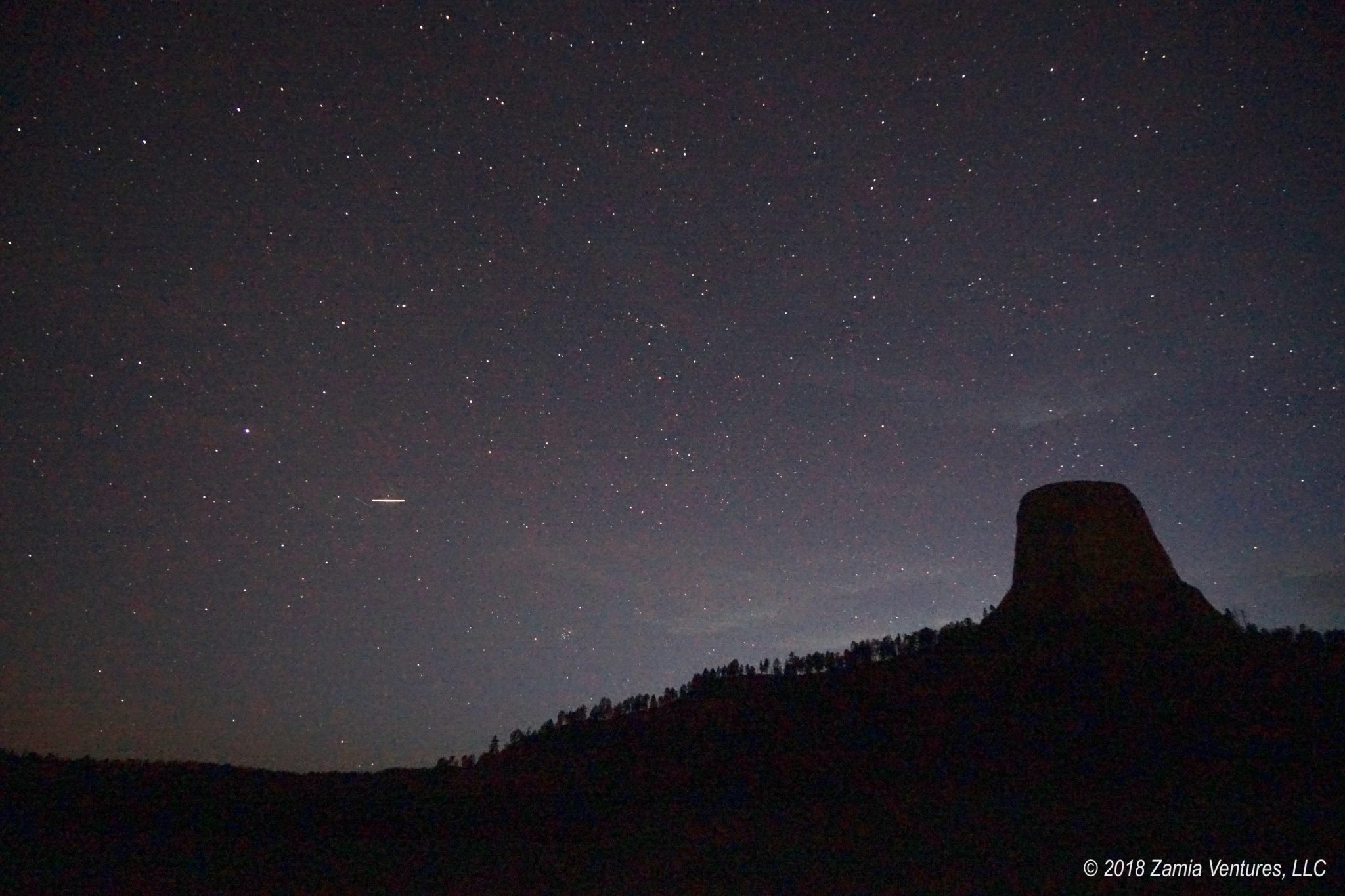
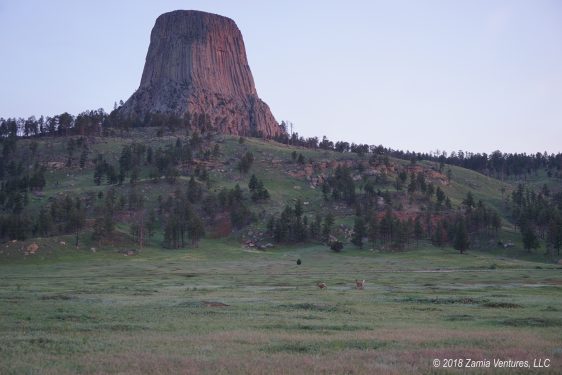
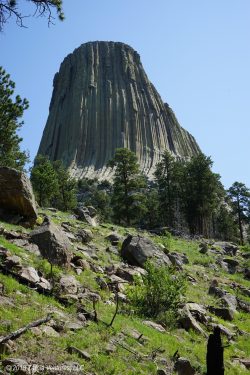
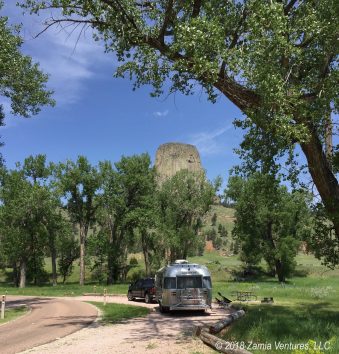
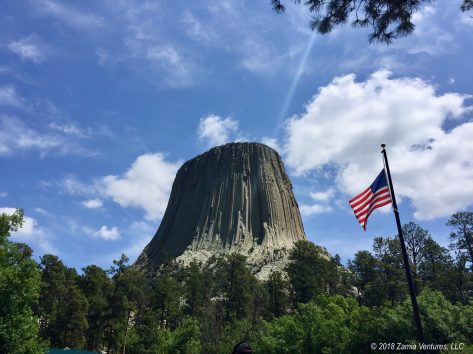
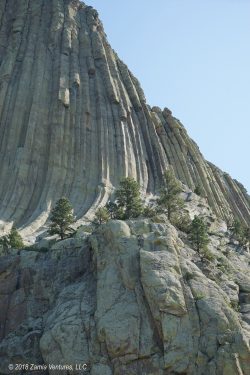
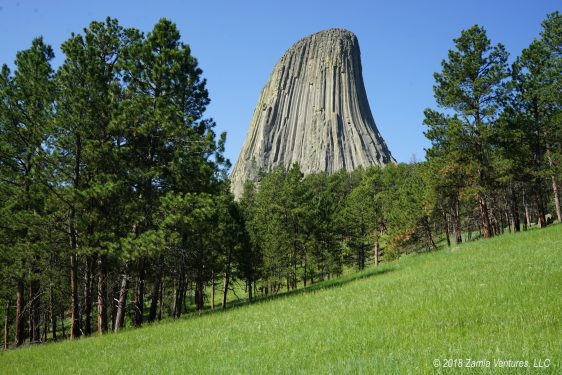
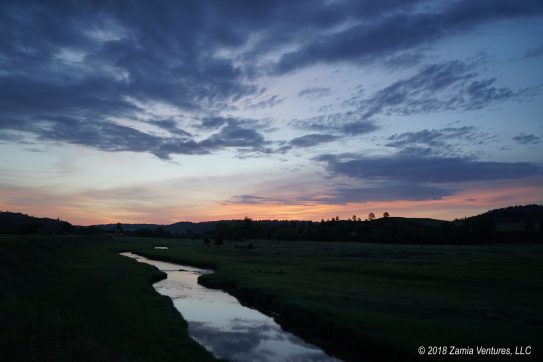
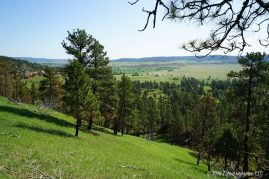
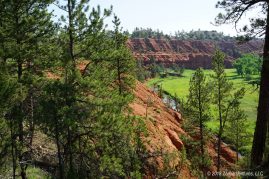
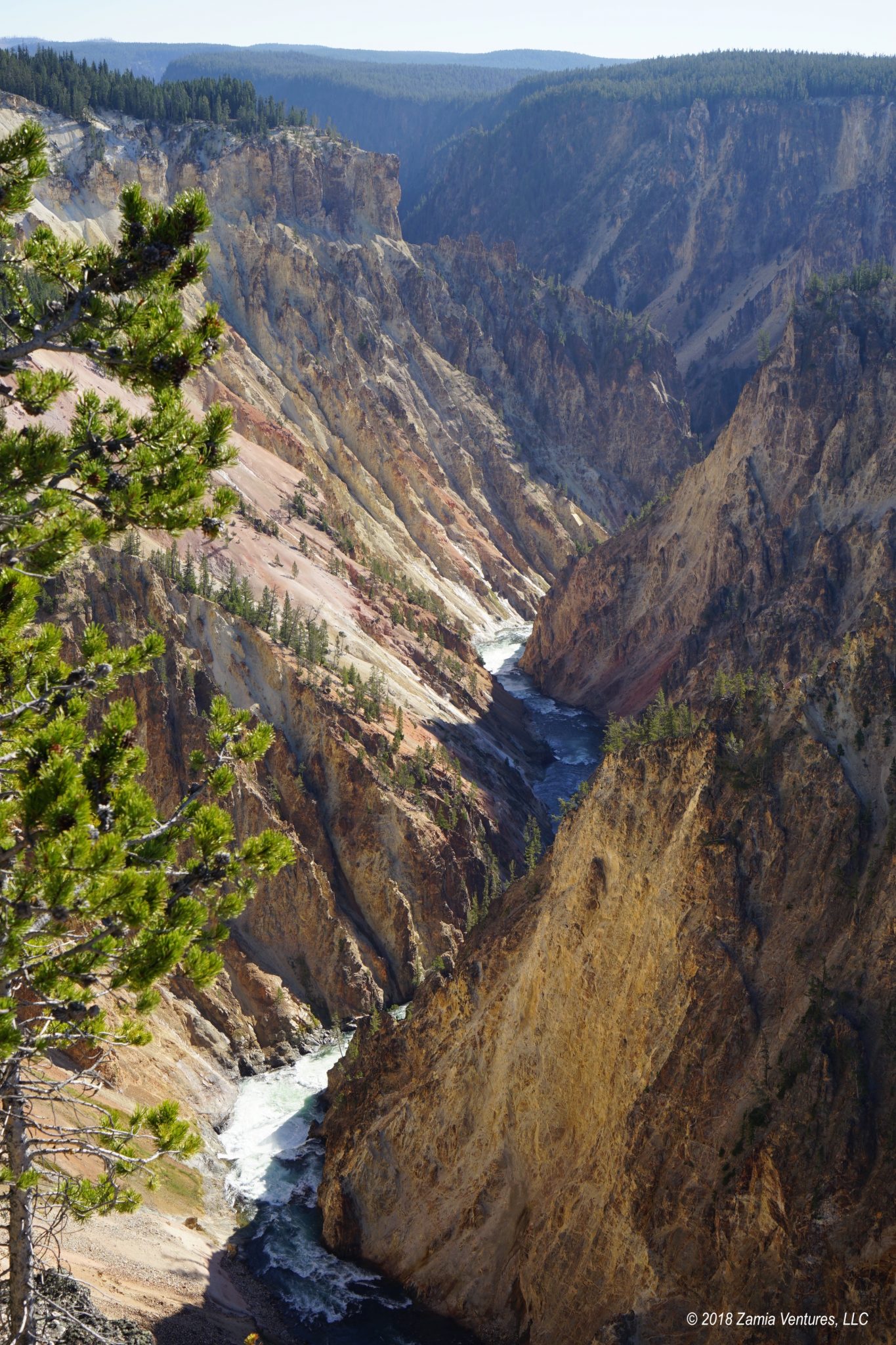
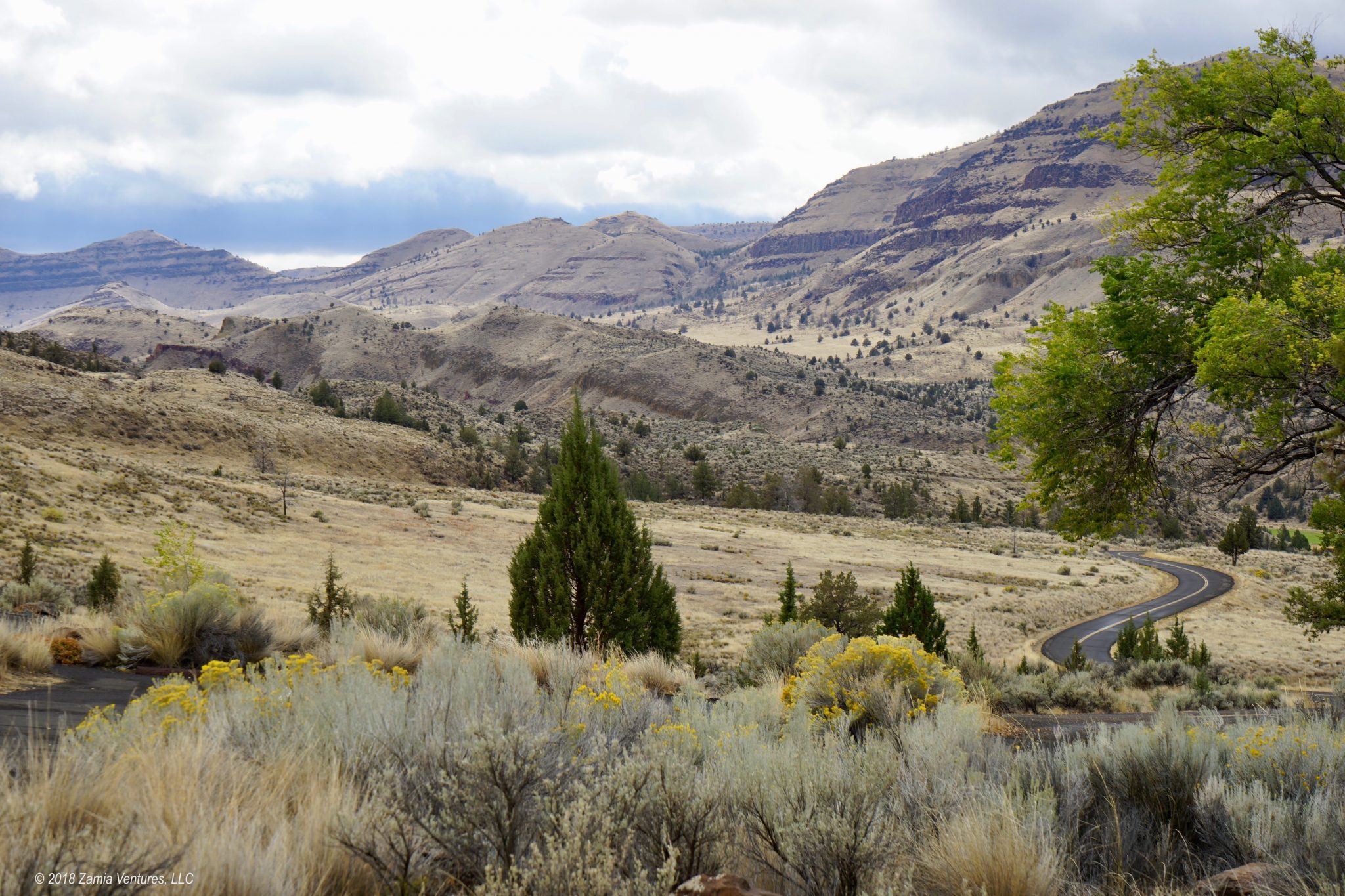
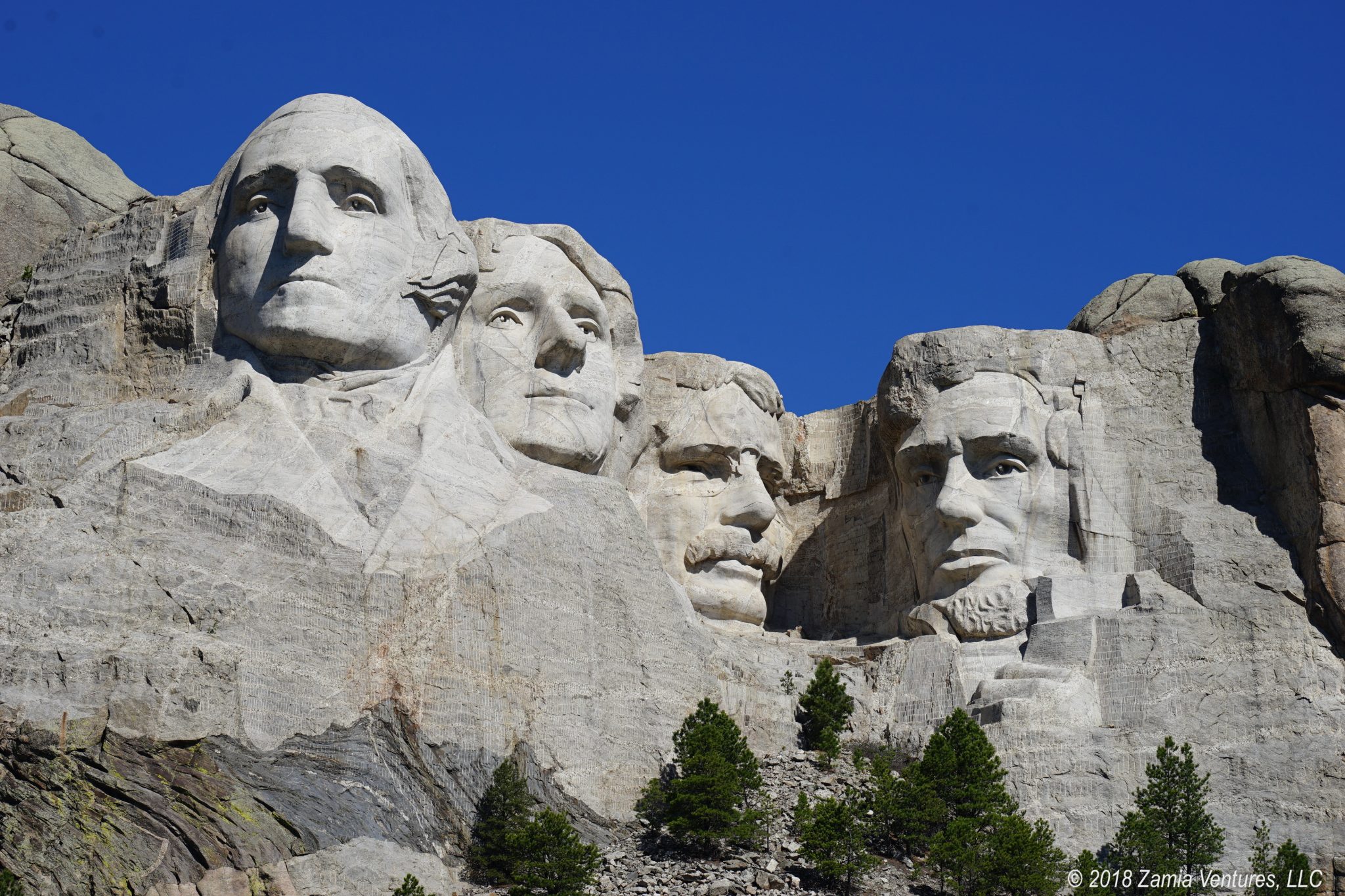
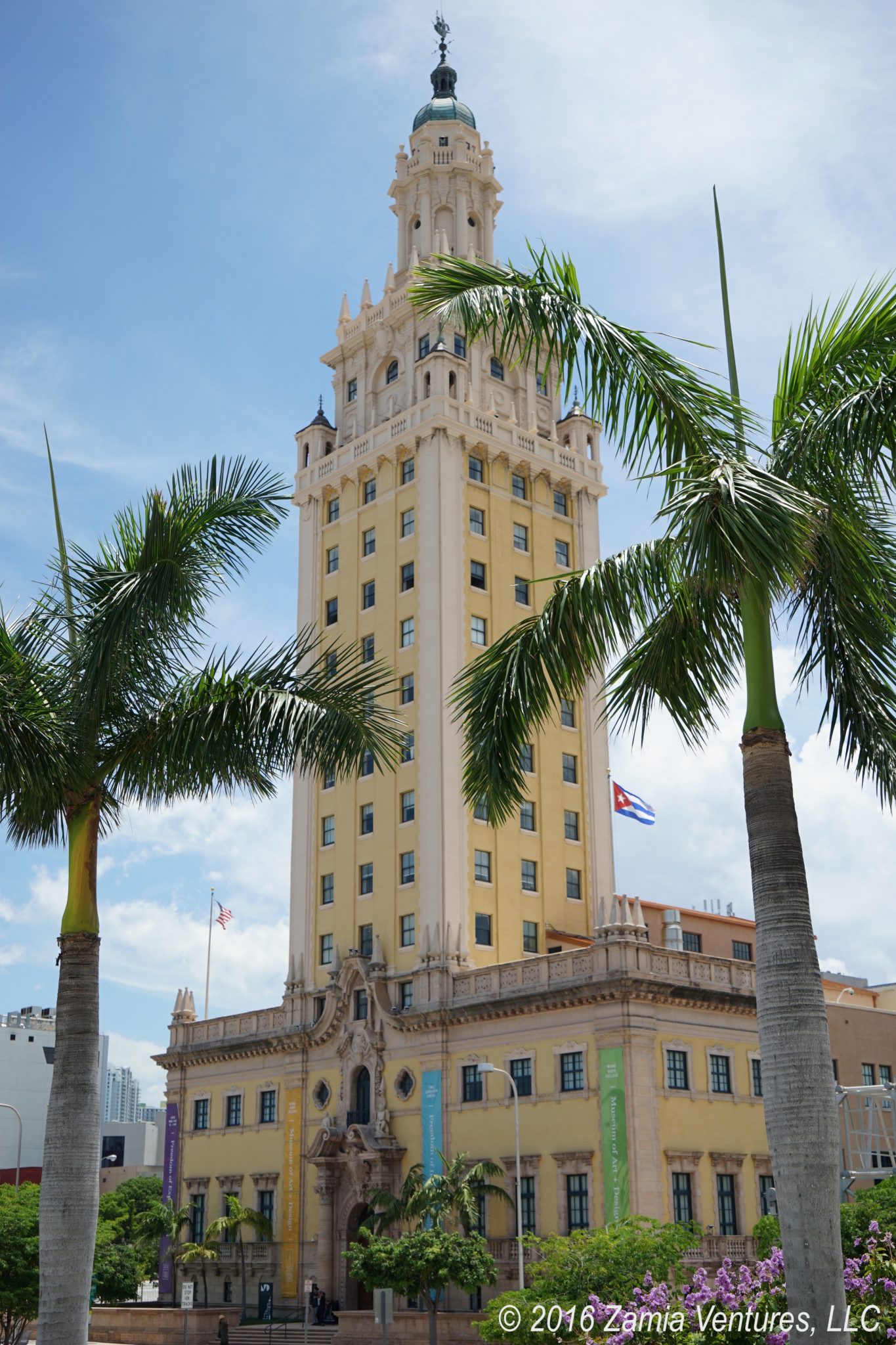
In the night picture , that is a UFO spaceship to the left of the tower 🙂
That’s what I assumed also. 🙂
This is very interesting about this strange landmark. Especially the night shot makes it look somewhat otherworldly.
It really is so unusual looking, even from a great distance. I can see why it was a landmark for so many different cultures.
Devils Tower is one of my favorite parks. The view from miles away is breathtaking and the hiking trails seem endless. I would love to be fearless enough to climb it and take in the view from the top. Your nighttime picture is unreal. You can see why they refer to this area as “Big Sky” country.
We saw quite a few climbers, and we were pretty amazed at their climbing speed given the vertical conditions. They were obviously experienced!